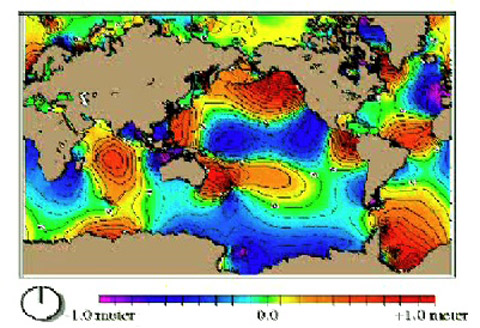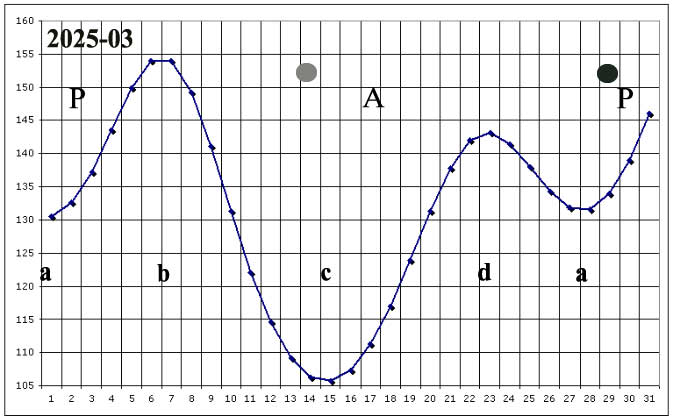--- 0.0.#1 ---
Prologue.
In February 1943, Erwin Schrödinger wondered how the evolution of life was possible, given the validity of the second law of thermodynamics (the principle of increasing entropy).
This led him to suggest that, in the mosaic of the laws of physics, we should be prepared to accept a new piece, to complement what is already known.
A few years later, Leon Brillouin wondered: "How is it possible to understand life, when the entire world is ordered according to the second law of thermodynamics, which tends towards death and annihilation?"
This problem, posed by Erwin Schrödinger, Leon Brillouin, and others, now finds an answer in what I call cumulative-dissipative processes.
An application in Agriculture.
To those who think they will find only theory here, I want to say right away that they will also find an application in agriculture. Knowledge of these processes allows for a planting procedure that is useful for significantly increasing yields.
On this introductory page.
Instead of immediately explaining what these processes are, at the very beginning, I think it is more useful to first introduce some points of physics where they operate.
Only later, on this introductory page, and subsequently in specific chapters, which I call itineraries here, will I explain how these processes are activated.
--- 0.0.#2 ---
The phenomenon of tides.
I prefer not to start with the most important phenomenon generated by cumulative-dissipative processes, that of evolution.
I want to begin with the phenomenon of tides, how they behave, as shown in the video published by NASA. I would like to thank NASA here for allowing me to publish it.
The video correctly indicates that there are not two large tide waves, extending from north to south, and moving from east to west, as would be the case if the current theory, which attributes them to gravity, were true.
Instead, tides develop as many tidal waves, each within its own basin, moving counter-clockwise in the northern hemisphere and clockwise in the southern hemisphere, due to magnetism.
The varying level of local magnetism is also the cause of the tidal frequency in the various basins. If it is at a normal level, the tidal frequency is semi-diurnal. If the level is high, the frequency becomes diurnal. In some tidal basins, the frequency varies with the season.
All of this would be impossible if the tides were caused by the gravitational attractions of the Moon and Sun, but it is possible if they are due to movement relative to other matter (including the Moon and Sun), alternating between cumulative and dissipative processes, in the ways we will see later, and conditioned by local magnetism, which determines their frequency.
A much simpler theory of tides.
What is said here is still an alternative theory, provisionally awaiting confirmation from other researchers. In my opinion, it easily passes the Occam's Razor test, unlike the current theory, which attributes the cause of the tides to gravity.
--- 0.0.#3 ---
Evolution and the Second Law of Thermodynamics.
After discussing tides, I want to return to the questions posed at the beginning by Erwin Schrödinger and Leon Brillouin, questions that are even more fundamental than the phenomenon of tides.
They wondered in what ways the phenomenon of evolution is made possible here on Earth,
(1) understood as an increase in complexity, development, and improvement of various forms of life,
when instead
(2) due to the second law of thermodynamics, considered in isolation, and supported by experiments that validate it, every use or transfer of energy should almost always occur with an efficiency of less than 100 percent, which would result in a decrease in complexity and development, in a process of involution, leading to the so-called "heat death."
--- 0.0.#4 ---
How to explain the phenomenon of evolution.
The phenomenon called evolution, contrary to what would happen as a result of the second law of thermodynamics, is made possible:
1 - firstly, thanks to the energy we receive from the Sun, in its process of depletion;
2 - when cumulative-dissipative processes, the subject of this research, can also take place.
As a method, I do not exclude the possibility that there may also be other processes compensating for the second law of thermodynamics, not yet considered.
How long can evolution continue?
The evolution that occurs on Earth will continue, in practice, until one of these two conditions occurs first:
1 - when high temperatures, incompatible with life, are reached;
2 - when the Sun can no longer provide enough useful energy to compensate for what happens due to the second law.
I expect that the condition that will occur first will be number 1.
---- 0.0.#5 ----
Two consequent forces.
Before considering cumulative-dissipative processes, I will mention the two consequent forces (forces that arise as a consequence of something else), which generate them.
These two consequent forces are:
gravity (due to the interaction between matter and other matter; interaction that determines movement);
and the “force d”, provisionally defined by me as “force due to angular movement with respect to other matter”. This force appears to operate on the configurations of the seeds at given critical angular velocities.
Gravity determines movement, the “force d” exploits it, in particular giving rise to cumulative-dissipative processes.
As we will see on page 1.3.4, the two forces have very distinct characteristics.
---- 0.0.#6 ----
Cumulative-dissipative processes.
Cumulative-dissipative processes are caused by angular motion relative to other matter;
- cumulative when this motion is increasing, accompanied by heat accumulation;
- dissipative when this motion is decreasing, accompanied by heat dissipation.
Cumulative-dissipative processes in seeds.
The way (or one of the ways) in which the second law of thermodynamics is compensated is that of the cumulative-dissipative processes that occur in seeds, the subject of the first part of this study.
Understanding the timing and methods of these processes allows for increased efficiency, compared to planting without taking the results of this research into account.
The increase in efficiency, and therefore in yields, ranges from 30 to 50 percent within the general efficiency cycle of 18.6 years, determined by the Moon's declination with respect to the equator, as will be explained in more detail in the prologue on seeds.
Energy first borrowed from the environment, then returned.
In the cumulative phase (b-c; d-a), energy, in the form of heat, is borrowed from the environment; molecules tend to assume higher-energy, less uniform configurations.
In the dissipative phase (a-b; c-d), the energy, first borrowed in the cumulative phase, is returned to the environment; molecules then tend to fall into lower-energy, more uniform configurations, in a kind of reset, a self-reorganization.
At the end of this double process, the negentropic balance is positive. Entropy has decreased.
The cumulative phase turns out to be functional to the dissipative one, as we will see in experiment E (on seeds).
The missing piece.
What has been said now can be considered as the missing piece in the reasoning practiced up to now, where the second law of thermodynamics and evolution, although declared as incompatible with each other, each is then treated as true in practice.
Now - thanks to cumulative-dissipative processes - the second law of thermodynamics and evolution can finally be considered compatible, even in theory.
--- 0.0.#7 ---
What led me to become interested in tides.
On many occasions in my experiments with seeds, I have been able to observe when they soften most easily. This happens on a bi-diurnal cycle, reminiscent of the tides of most tidal basins - those with a bi-diurnal cadence.
However, when, in “experiment B”, I intervene with a magnet, the cadence of the cumulative-dissipative cycle changes, from bi-diurnal to diurnal, as happens in some tidal basins.
Other possible similarities between seeds and tides.
Some time ago, the results of “experiment B” led me to consider other possible similarities between seeds and tides, and to compare the current theory of tides with another provisional alternative theory, where the cause of the tide is no longer assumed to be gravity, but rather motion relative to other matter, as happens with seeds.
---- 0.0.#8 ----
Application in Agriculture.
After the introduction, in the first part of the site, a sowing procedure is communicated, useful for making these processes efficient in the seeds, resulting in a significant increase in harvests.
The Phenomenon of the Tides.
In the second part of the site, the discovery of these processes allows us to provide a theory of the tidal phenomenon consistent with the facts, without the complications and inconsistencies of the current one, accepted as valid for over 330 years.
---- 0.0.#9 ----
Neither on the Moon nor on Mars.
All the conditions necessary for cumulative-dissipative processes to take place are present on Earth. An adequate magnetic field is also among the necessary conditions.
Not so on the Moon, nor on Mars, where, I presume, the effects of the second law of thermodynamics are not balanced by cumulative-dissipative processes, as happens here on Earth.
The results of "experiments A" and "experiments E", to be performed on the Moon and on Mars, could confirm or not these suppositions of mine.
As for Mars.
In fact, the discovery of cumulative-dissipative processes, so important for Agriculture, adds another negative element regarding the feasibility of living on Mars.
Mars has two satellites, but with small masses, not enough for the movement, with respect to them, to generate enough cumulative-dissipative processes on the planet.
Even the reduced magnetic field would not satisfy what is necessary for these processes.
In addition to all this, for the sole fact that the positions of the two poles on Mars, with respect to the equator, are unstable and very variable, it completely removes any possibility of being able to live and prosper there, without bringing from Earth what is needed.
==============================================================
A quest to be concluded.
What I found must be confirmed by other researchers. In fact, for this topic, there is no “peer review” yet. There will be some only after other researchers have performed the necessary observations and experiments.
This search is far from complete. I am alone, and there are still large areas to be defined, for example the list of critical angular velocities at which cumulative-dissipative processes are performed.
Where I have failed, others can take it as an opportunity, as an incentive to adopt this research to complete it, given my age (I was born in February 1943).
==============================================================

